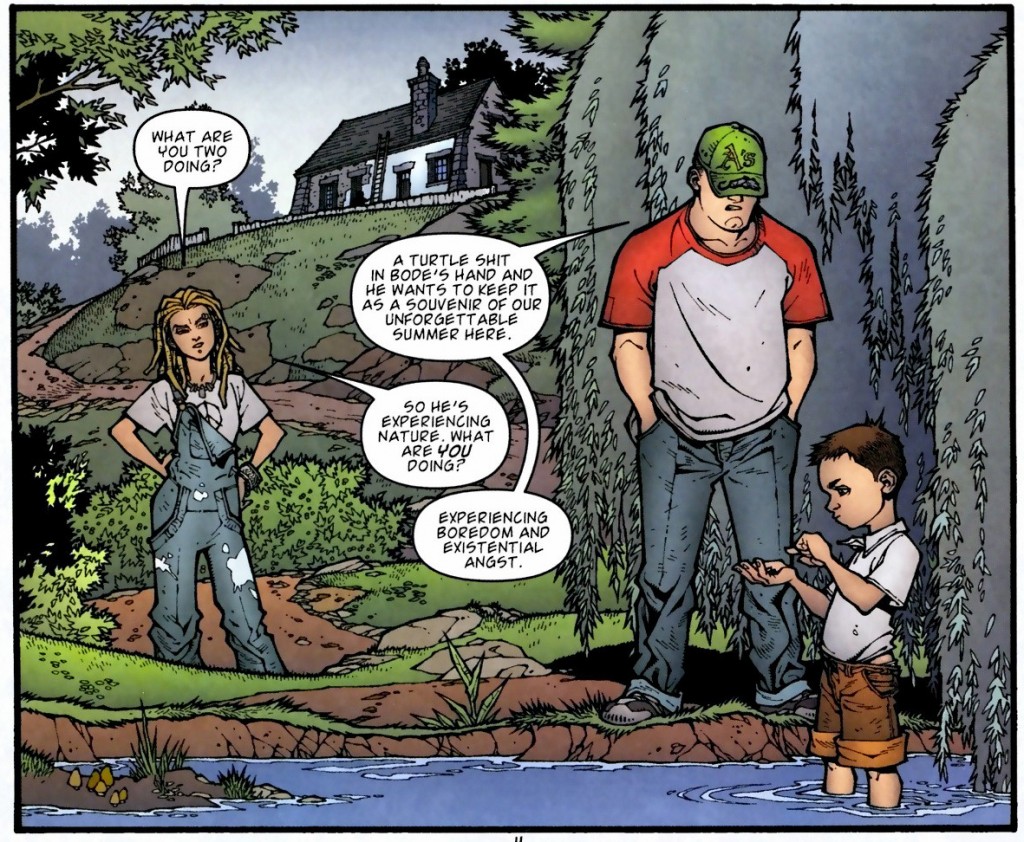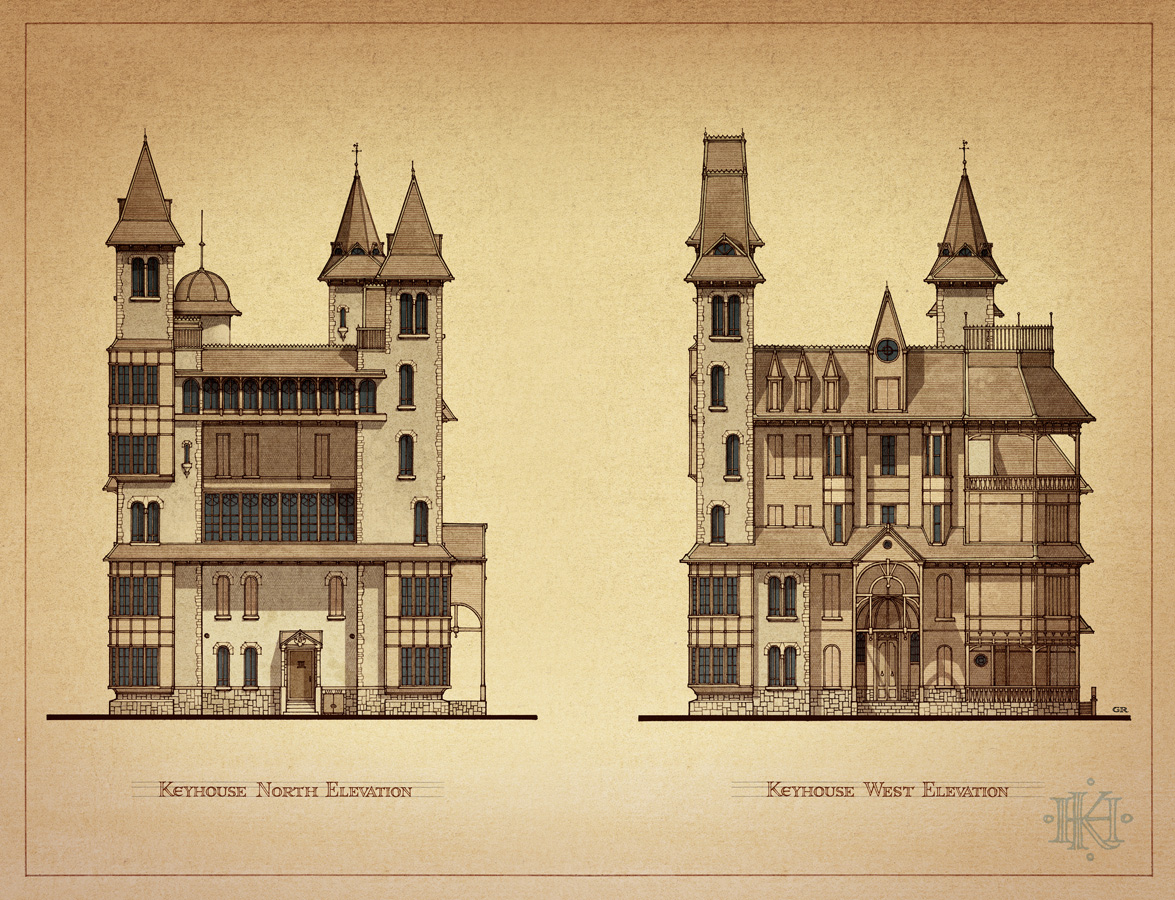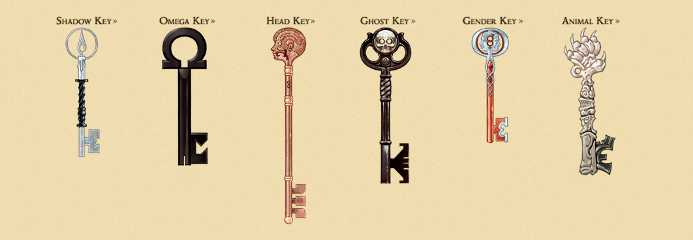By now, most people who follow the Science Fiction, Fantasy, and Horror genres are aware Joe Hill is the son of Stephen King, so let’s get that out of the way. With his prose fiction and comic book work (most prominently this here series), Joe Hill has carved out his own space in modern dark fiction. When he launched Locke & Key in 2008 with the superb artist Gabriel Rodriguez, Hill’s lineage had just been revealed, but even that couldn’t prepare readers for the dark tale he and his co-creator were unleashing on the world.

The first volume introduces readers to the Locke family as they relocate to Lovecraft, MA following the brutal murder of the family patriarch Rendell. The remaining family includes eldest brother Tyler, his sister Kinsey, youngest boy Bode and their mother Nina.
They are initially joined by Duncan, Rendell’s younger brother, who helps with the move as they settle into the expansive Keyhouse Manor. Unbeknownst to the family, or rather, unremembered by the family, Keyhouse holds many dark and supernatural secrets and is much more than it seems. Magical keys can open doors to altered states of being, as young Bode learns in the first volume when he uses the Ghost Key to leave his body and wander the grounds of the land as a spirit. I won’t reveal more than this because the journey of discovery through this story is enchanting.
However, one thing becomes quite clear by the end of Welcome to Lovecraft, the first volume of the saga, as uttered by the mysterious being first known as Dodge:
“No. You can’t understand. Because you’re reading the last chapter of something without having read the first chapter. You’re a little guy, Bode. Kids always think they’re coming into a story at the beginning, when they’re usually coming in at the end.”
I haven’t read the entire series, so this series here on Tor.com will be half re-read and half first encounter for me. At the time of this writing, the final issue, was just placed on comic shelves, with the sixth graphic novel/collection Alpha and Omega coming in February. I made it about halfway through the series in single issues when I realized I wanted to wait until the whole series was complete before revisiting it in a more successive read.

The series has been drawing comparisons to Neil Gaiman’s Sandman series and even if the two stories are slightly different in the scope, there’s an appreciation for the power of story and imagination in both stories. On numerous occasions, Mr. Hill has pointed to Mr. Gaiman as an influence. Superficially, as the story begins, Hill & Rodriguez lull readers in with two common tropes of the horror genre—the home invasion and the haunted house story. This framework is then used as a launching pad into many dark and fantastic realms through the use of the keys, similar to Sandman’s use of dreams.
Locke & Key is the first major exposure to American comic book readers to the art of Gabriel Rodriguez, which is a fine balance between cute and creepy. To say that Rodriguez, who is listed as co-creator, has made a splash with his art is an understatement. Put it this way, one of his first major projects upon the conclusion of Locke & Key is a Superman story. His art has a depth and an almost liquid, mercury-like feel to it, especially when he flexes his muscles and brings forth the ghostly and spiritual images.
Some artists and writers were simply meant to be teamed together: Stan Lee & Jack Kirby on most of the Marvel Universe, but especially Fantastic Four; John Byrne & Chris Claremont on Uncanny X-Men; Bill Willingham & Mark Buckingham on Fables; Garth Ennis & Steve Dillon on Preacher; and Brian K. Vaughan & Pia Guerra on Y: The Last Man. To an extent, I’d even suggest that Rodriguez’s art is a bit reminiscent of Dillon’s pencils especially in the two artists’ ability to convey emotions through their characters’ faces. What’s more impressive is this is the first time these two have worked together here on Locke & Key; which is a truly unified vision of the dark fantastic. Hill & Rodriguez have the benefit (like Willingham & Buckingham, and Lee & Kirby to an extent) of not being beholden to any kind of continuity and allowing the powerful storytelling and imagination to run untethered.

The series is published in 6 storylines, with assorted shorter stories focusing on the Locke family throughout the years. Each of the six “chapters” (or each graphic novel, if you will) is comprised of six issues, with the exception of the final installment, Alpha and Omega, which is comprised of 7 total issues (5 of “Omega” and 2 of “Alpha” ).
At the end of each of these review posts, I’ll be posting a tally of the new keys introduced. So, for readers who have been following the Locke family for the past five years or those just joining the story, I say this…
Welcome to Lovecraft.
Rob Bedford lives in NJ with his wife and dog. He reviews books and moderates forums at SFFWorld, has a blog about stuff and writes “The Completist” column for SF Signal. If you want to read random thoughts about books, TV, his dog, beer, and hockey you can follow him on Twitter: @RobHBedford.










